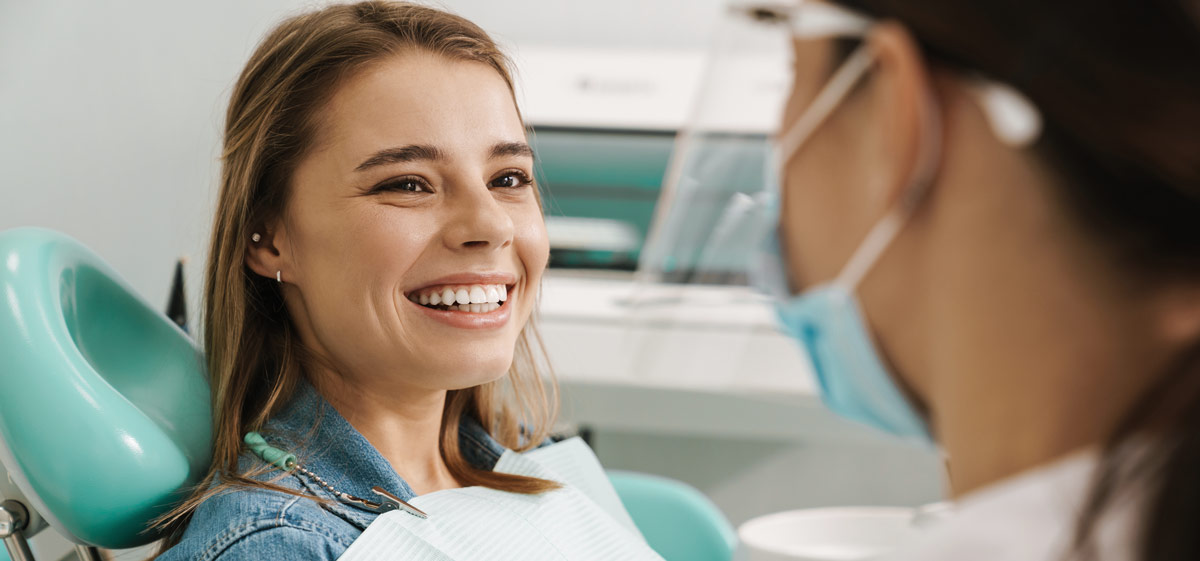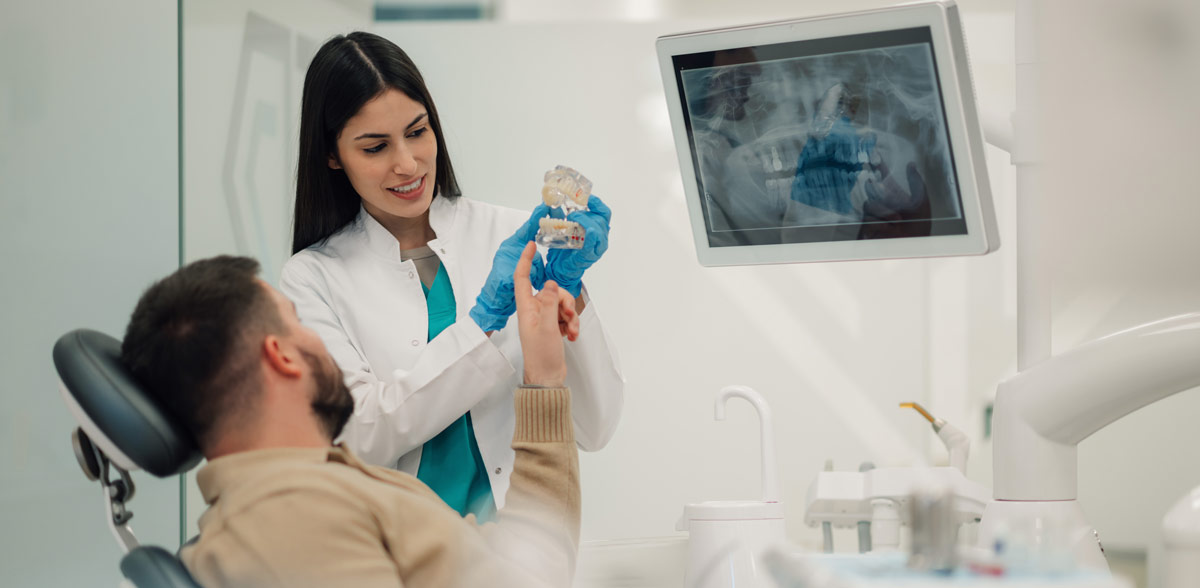Tooth loss can affect anyone, from children who experience accidents on the playground to adults who suffer from decay, trauma, or health conditions. Traditionally, tooth replacement options have included dental implants, dentures, and dental bridges. These involve placing an artificial tooth to restore aesthetics and function.
However, there is a lesser-known and surprisingly effective option available in modern implant dentistry: tooth transplantation, also referred to as tooth auto-transplantation.
Can you really transplant a real tooth into another part of the mouth and have it survive? The answer is yes, in the right circumstances. This approach offers patients the opportunity to restore lost teeth using their own natural teeth. It provides a biologically compatible solution that does not rely on metal implants or porcelain-fused prosthetics.
This blog explores the science, process, and future of using natural teeth as a solution for a missing tooth.
What is tooth auto-transplantation?
Tooth auto-transplantation is a surgical process that involves moving a real tooth from one site in the mouth to another.
Typically, this means relocating a tooth that is not vital for function, such as a wisdom tooth, to replace a missing tooth in a more critical or visible location. This might be at the front of the mouth or on a chewing surface.
Unlike dental implants, which require placing a metal frame or metal implant into the jaw followed by a new artificial tooth, this method allows patients to use their own tooth root.
This preserves a more natural biological connection with the surrounding bone and gum tissue. It is a unique approach that offers promising long-term outcomes, especially in younger patients where bone growth is still occurring.
Why this topic matters to patients and dentists
For patients exploring tooth replacement options, understanding the full spectrum of treatment possibilities is essential.
Auto-transplantation can offer a good prognosis in specific cases, particularly when traditional dental implant procedures are not ideal. It is also a cost-effective and biologically sound alternative that does not rely on synthetic materials or multiple stages of bone grafting and dental implant surgery.
From a dentist’s perspective, offering this solution expands the scope of patient care. It allows for personalised treatment that leverages the body’s natural anatomy. With proper technique and planning, it can even provide better integration with neighbouring teeth, improve bite alignment, and reduce complications associated with implant failure or sinus problems.
The science behind tooth transplantation
The science of tooth transplantation relies on preserving the delicate cells around the tooth root. These cells are vital for integration with the surrounding jaw and gums.
Once the donor tooth, often a non-erupted wisdom tooth or a healthy deciduous tooth, is carefully extracted, it is placed into a freshly prepared socket where the missing tooth used to be.
The transplanted tooth is then stabilised using splints or wires while the gums heal and the bone begins to integrate around the tooth root. This biological integration allows the tooth to retain sensory function, which is lost in a metal implant.
It also supports the continued health of the surrounding bone, something even most dental implants cannot fully replicate.
Ideal candidates for tooth transplantation
Tooth auto-transplantation is a highly effective solution in the right circumstances. Below are the groups of people and scenarios where it tends to work best.
Young patients with ongoing bone growth
Auto-transplantation is ideal for teenagers and young adults whose jawbones are still developing. Dental implants are generally unsuitable at this stage due to ongoing bone growth. A transplanted natural tooth, such as a wisdom tooth, can function well and continue to adapt with the jaw over time.
It’s particularly useful after accidental tooth loss, offering a long-term solution without relying on dentures or delaying treatment.
Patients with suitable donor teeth
Ideal candidates have at least one healthy tooth that’s not essential for chewing or aesthetics. Wisdom teeth are the most commonly used donor teeth, especially if they’re healthy and fully formed. Some deciduous teeth can also be used in younger patients.
The donor tooth must have a strong root structure and be the right shape to fit the new position.
Individuals in good health
Good oral hygiene and overall health are crucial for a successful transplant. Patients must have healthy gums and be free from infections or periodontal disease in and around their other teeth. Those with uncontrolled medical conditions like diabetes may be at higher risk of complications.
Commitment to follow-up care and regular dental visits is also important for long-term success.
Patients with a healthy recipient site
The area receiving the transplanted tooth must have enough healthy bone and gum tissue to support integration. If there’s significant bone loss, bone grafting may be needed first. An oral surgeon will assess whether the space is suitable, especially in areas close to sinus cavities in the upper jaw.
Patients seeking alternatives to implants or dentures
Tooth transplantation offers a natural and cost-effective alternative option for those who want to avoid metal implants and synthetic materials or who don’t want to wear dentures.
It’s also ideal for those who’ve experienced implant failure or who have been deemed unsuitable for other implant procedures due to bone loss or health conditions.
However, in some cases, a tooth transplant isn’t possible, such as when no suitable donor tooth is available, several teeth need replacing, or if the recipient site lacks enough healthy bone. In such situations, dental implants may be the only viable long-term option, particularly for adults with fully developed jaws and stable oral health.
The procedure step by step
Initial consultation and imaging
The journey begins with a thorough examination by your dentist or oral surgeon. This includes digital scans and X-rays to assess your jaw, gums, and nearby teeth.
These images help determine if there is enough bone and healthy gum tissue to support a transplanted tooth. The specialist will also review your medical history, oral hygiene habits, and the status of neighbouring teeth to identify potential risks.
Advanced imaging can reveal complications such as proximity to sinus cavities in the upper jaw or existing bone loss. These factors may affect the long-term success of the transplant. If a suitable donor tooth is available and the recipient site is healthy, the procedure can be planned.
Surgical process and follow-up care
Under local anaesthesia, the donor tooth is carefully extracted. It is vital to preserve the surrounding periodontal ligament. A socket is prepared at the recipient site, either freshly or using 3D modelling. The real tooth is gently inserted, aligned correctly, and splinted in place.
After surgery, the patient will be monitored closely. A soft diet is recommended for the first couple of weeks, along with antiseptic rinses and regular dental visits to ensure the transplant is healing well. Good oral hygiene is essential during this period to avoid infection or implant failure.
Over time, the transplanted tooth begins to reattach via natural biological processes. This provides a functioning, feeling, and visually seamless new tooth. It also preserves the jaw’s natural bone structure.
Success rates and potential risks
What are the chances of a successful transplant?
Studies show that when performed under ideal conditions, tooth transplantation has a success rate of 80 to 90 percent. Proper technique, patient compliance, and regular check-ups are all essential to ensuring long-term success. While dental implants are often seen as the gold standard in tooth replacement, they do not provide the same natural feedback or biological integration as a transplanted tooth.
Success also depends on whether the transplanted natural tooth develops a healthy connection with the jaw and gums. If integration is successful, the tooth can last for many years, sometimes even for life.
Possible complications and how they are managed
Despite its high success rate, auto-transplantation does carry risks. These include root resorption, pulp necrosis, or failure of the gums to integrate properly. If the transplant is unsuccessful, the area can still be rehabilitated. Options may include a metal implant, bone grafting, or a dental bridge, depending on the extent of the damage.
Patients with poor oral hygiene, a history of health conditions that affect healing, or insufficient healthy bone may experience complications similar to those found in dental implant procedures. However, these issues can usually be managed through close follow-up and adjustments to the treatment plan.
Looking ahead: the future of tooth transplantation
Innovations in dental transplant techniques
The future of tooth transplantation is promising. This is due to technological innovations like 3D modelling of tooth sockets, bioengineered scaffolds, and improved oral and maxillofacial surgery tools. Dentists can now pre-plan the procedure using virtual simulations. This improves precision and reduces the risk of complications.
As understanding of tissue regeneration and bone growth continues to evolve, researchers are also exploring the use of stem cells and regenerative therapies. These advancements could further enhance the outcomes of transplanted teeth.
How UK dentistry is evolving in this area
While still relatively niche, more UK clinics and university dental hospitals are beginning to offer auto-transplantation as part of their oral surgery and implant dentistry services. With the support of organisations like the American Dental Association and similar UK bodies, clinical guidelines and training in tooth transplant techniques are expanding.
This is especially valuable in the NHS setting, where patients may benefit from lower-cost alternatives to private dental implants. As awareness grows, patients and dentists alike are likely to consider tooth auto-transplantation a viable, practical, and long-lasting solution for tooth loss. This is especially true when preserving the use of natural teeth is a top priority.
Fulham Road Dental: auto-transplantation specialists in London
Tooth transplantation may not be the first thing that comes to mind when you think of tooth replacement. However, in the right hands and for the right patient, it offers a truly natural, functional, and long-lasting solution.
If you’re considering tooth autotransplantation, Fulham Road Dental offers expert services tailored to your needs. Our experienced team provide personalised treatment plans, and we use only the most advanced imaging and precise surgical techniques to ensure optimal outcomes. Whether for children, adolescents, or adults, we assess each case carefully to determine suitability and guide you through every step of the process.
Whatever your situation, it’s important to explore all your tooth replacement options. Speak with a dental professional today to find out how tooth autotransplantation or other treatments can help restore your smile and oral health.




